DISCLOSURE: AS AN AMAZON ASSOCIATE I EARN FROM QUALIFYING PURCHASES. READ THE FULL DISCLOSURE FOR MORE INFO. ALL AFFILIATE LINKS ARE MARKED #ad
Tip: If you’re already familiar with cine lenses, and want to read about some recommended cine lenses for different budgets and cameras, read my guide Best Affordable Cine Lenses (Budget, Mid-Range, and Professional).
Cine lenses. A lot of us have probably heard of them, but they often carry an air of mysticism.
If you’re like me, the first handful of projects you shot on a DSLR were with an 18-55mm kit lens, and while that may have served you well over the years, there’s a point in which we all want an upgrade.
Especially, if we know we want to do professional video and film work, there comes a time when we much seriously consider making the upgrade into specialized lenses.
I remember the first time I put my friend’s cine lens on my Canon Rebel T5i, and though the lens cost more than the camera, I was still shocked at how one piece of glass could make the image so much better.
Now, because the world of cine lenses can be pretty complicated, this article will serve as a general guide.
From understanding what they are and why you should use one, to considerations necessary in purchasing one, to the most popular brands at all price points, this guide will make it clear why cine lenses are so useful and what to look for when you’re buying.
After reading this guide, not only will you understand what your DP friends are talking about when they’re discussing lenses, but you will also be better equipped to know if a cine lens is right for you.
What Exactly Is A Cine Lens?
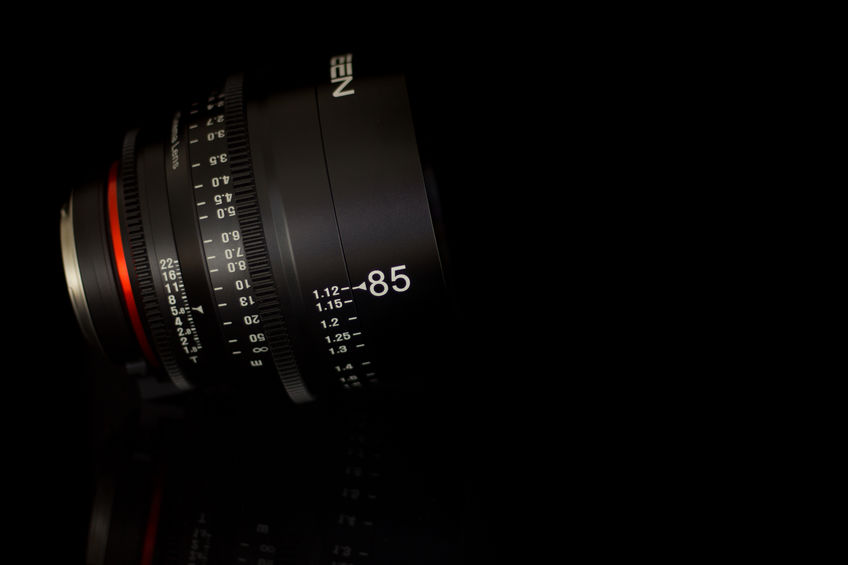
A cine lens (short for cinema lens) is a lens designed specifically for film and video production. That means that they are designed to record motion.
Therefore, cine lenses have well-marked focal lengths and aperture markings on two separate rings that can be manually adjusted by the filmmaker while recording.
So, instead of using autofocus and having to change your aperture in-camera, you are able to do so with the gears on your lens.
The gears on the lens have teeth specifically designed to pair with a follow focus system, which allows for very precise control over focus. Though not necessary to use a cine lens, follow focus helps you get the most out of your lens.
Later in the article, we’ll get into more detail about follow focus and the gears on your lens.
What’s The Difference Between A Cine Lens And A Still Lens?
There are quite a few differences between a cine lens and a still lens in addition to what was just mentioned. Being specifically designed for film production, cine lenses have many features that are especially useful in motion picture production.
Many of these features come down to offering consistency so that you can maintain a similar image between days of shooting or between lenses.
Still Lenses Have F-stops And Cine Lenses Have T-stops
For example, unlike still lenses using F-Stops, cine lenses use T-Stops.
In still lenses the ‘F’ stands for ‘focal length’ and the F-stop is a theoretical value that designates the relationship between the lens diameter and the length.
F-stops are not as precise when describing the amount of light passing through the lens a T-stops. Also, you’ll often find that a lens with for example an F-stop of 1.4 only has a T-stop of 1.7.
That’s because T-stops specifically measure the amount of light passing through the lens. Therefore, if you switch lenses but maintain the same T-Stop, the amount of light will be the same.
Cine Lenses Minimizes Breathing
Many cine lenses also minimize an effect called lens breathing which is found on still lenses. This happens when you rack focus (switching focus from one object or person to another) and it looks as if the image scale changes sizes.
Therefore, with a still lens, lens breathing isn’t noticeable, but with video it is. You’ve probably noticed it before (I’ve even seen it in plenty of TV shows) and it can be very distracting.
Cine Lenses Have Fixed Aperture And Are Parfocal
Furthermore, in many still lenses, there isn’t a fixed aperture, so when you zoom the aperture changes. In cine lenses, the aperture is clearly set and marked (as is focal length), allowing you to record and match your settings between shots.
What’s more is that zoom cine lenses are parfocal, meaning that the lens will stay in focus as focal length is changed. Though many still lenses also feature this, it is good to know that zoom cine lenses will keep your subject in focus.
Cine lenses also shouldn’t have vignetting, they have limited wide-angle distortion, and are able to produce great flares and bokeh. One more thing of note is that, with cinema lenses of one brand, they will have consistent color and contrast.
Ultimately, what you get for the price of a cine lens are consistency and total control.
Most cinema lenses in an affordable price range will end up being prime and, unless you’re willing to spend a lot more in order to zoom, you will usually end up looking at building a lens kit that has a wide, normal, and telephoto lens.
But, for your first purchase, it’s up to personal preference. For myself, I love the look of a wide-angle lens, however, if you’re looking for a nice depth of field, you may want to consider a normal length.
Who Uses Cine Lenses?
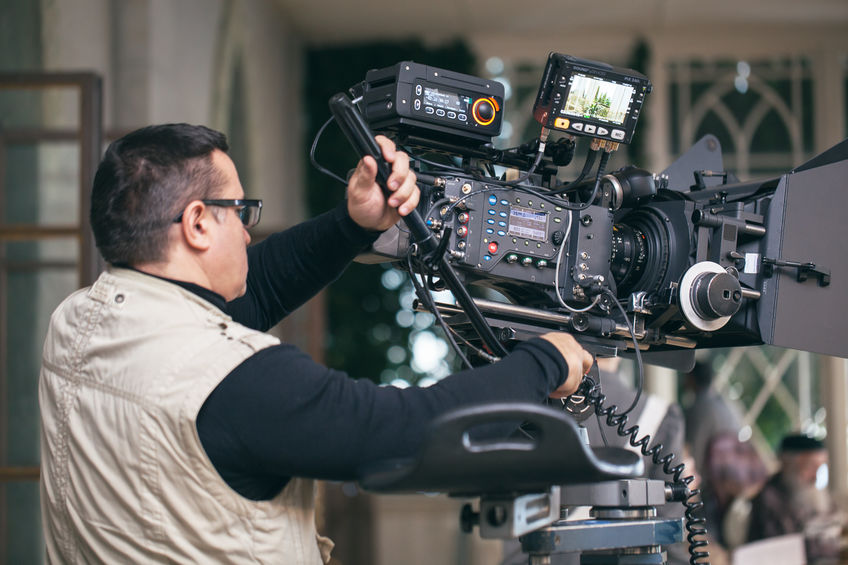
Cine lenses are found on the mainstage of cinema production, being used in Hollywood production for blockbuster movies. However, if you’re like me and don’t have a $70 million budget for your next project, that doesn’t mean you can’t still use a cine lens.
Filmmakers, videographers, students, and enthusiasts are all using cinema lenses across the board and making great use of them.
If you’re a still photographer it should be noted that you can take a still photo with a cinema lens, however, the manual adjustments of aperture and focus may be frustrating. Plus a cine lens is really heavy and expensive compared to a still lens counterpart.
That being said, if you’re filming something and between takes need or want to take a still, it is totally possible. It just might not be worth all the money if you buy a cine lens only for stills.
But I digress. Cine lenses are for all of us. With budget brands like Rokinon making them for a relatively affordable $500 apiece, to services like www.lensrentals.com, it is possible to get a cine lens for your next shoot at a decent price.
When to Use Cine Lenses?
If the project you’re working on would benefit from greater control and more consistency between shots, cine lenses are for you.
There are few reasons outside of budget not to use cine lenses, and though I will discuss lens mounts and adapters, later on, I will tease that subject by warning you to take caution.
Though they are great when needed, lens adapters can be expensive and may cause issues.
Besides finances, a couple of other reasons to avoid cine lenses may be the lack of autofocus and having no zoom capability.
Finally, cine lenses are heavier. So, if you’re shooting action sports, moving around a lot, or filming something by yourself, cine lenses can be cumbersome.
Having no autofocus requires you to know where the subject will be to keep them in focus, and no zoom capabilities often necessitate blocking to keep them in frame.
If you are a run and gun filmmaker or filming outside of a controlled setting by yourself, it may not be worth it to carry a case of cine lenses with you.
What Can A Cine Lens Do Special?
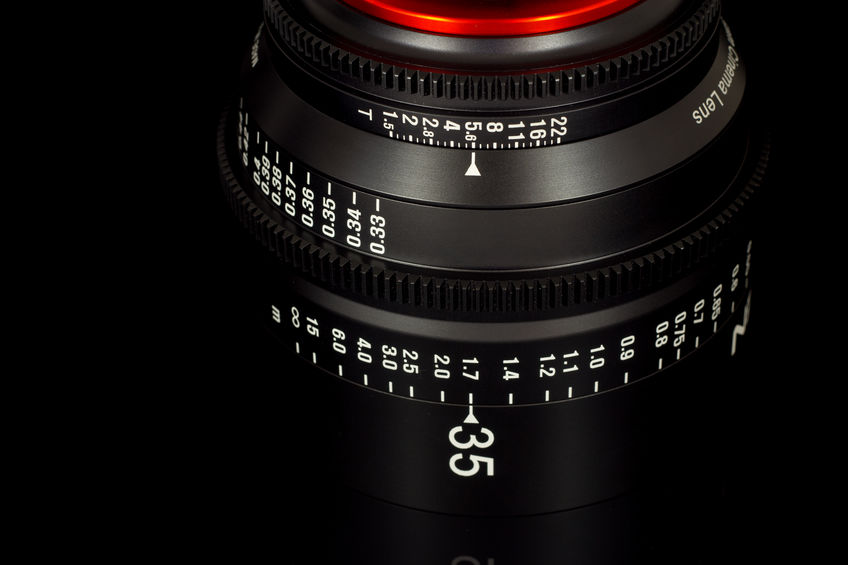
What can a cine lens do that my lens currently cannot?
Well, the answer is probably quite a bit, especially if it’s a kit lens. Though I mentioned some of the feature’s cine lenses have in contrast to other pieces of glass, it is worth digging into manually adjustable aperture, focus markings, breathing, vignettes, and barrel distortion a bit more.
Cine Lenses And Manually Adjusted Aperture
First off, let’s discuss manually adjusted aperture. Having a clear and manually marked aperture is extremely helpful when you’re looking for consistency. Especially between days of shooting, being able to clearly set your aperture is an absolute must.
Though you are able to see and set your aperture with still lenses in-camera, you must set it incrementally. Furthermore, many still zoom lenses will have their aperture change as the focal length does. Having a manual dial with a cine lens allows for minute adjustments and total control.
Cine Lenses And Manual Focus
Cine lenses also require manual focus as there is no electronic connection between the camera and the lens. Therefore, cine lenses have a large geared focus ring. Though this can be adjusted by hand, and often times will be, it also allows for the inclusion of a follow focus in your rig.
In brief, a follow focus is a geared attachment that allows for more precise control for rack focus (more on follow focus later).
Furthermore, these lenses have hard stops on their focus and aperture rings, so unlike some lenses that focus by wire, making adjustments with cine lenses is much more tactile and easily measured.
I mentioned how cine lenses minimize lens breathing when racking focus. Cheaper brands such as Samyang or Rokinon will, in varying degrees, still have issues with this. However, breathing is often much more an issue in zoom lenses than in prime lenses and, as we covered, affordable cine lenses are prime, while the expensive ones have a lot of engineering in place to minimize that effect.
Cine Lenses Aim To Minimize Vignetting And Barrel Distortion
Due to their higher quality, a lot of work is put into cine lenses to avoid vignetting. Again, the minimization of this depends a lot on the quality of the glass. So, while cheaper cine lenses may be better than your kit lens, lower-end pieces will not be entirely free of this problem.
Now it’s time to discuss barrel distortion. This often occurs on wide lenses and is the result of the field of view of the lens being greater than the image sensor. Fortunately, many cine lenses work to reduce this imperfection. So, if you’re like me and like shooting wide, using a cine lens can be extremely helpful.
Cine Lenses Have Big Aperture Rings With Great Control Over The Light
Additionally, because of their manually adjustable aperture and high speeds, cine lenses offer much more control over light. Because their aperture is measured in T-stops as opposed to F-Stops the exact amount of light entering through the lens is the same across the board.
Setting equal T-stops between lenses will result in the same amount of light. Again, this is hugely helpful in maintaining a consistent image.
Cine lenses are also able to open up and produce very shallow depths of field, which if desired can lead to some really impressive bokeh (out of focus blurring). Of course, what’s in the scene is often much more important than keeping things out of focus, but it’s certainly nice to have the option.
Even more, when presented with difficult lighting conditions cine lenses are especially beneficial. Whilst you shouldn’t expect miracles to happen, the quality of cine lenses will allow you to shoot more in high contrast environments and in low light. Impressively enough, lenses don’t affect just optics, and top-quality glass can help with lowering contrast so you can capture more.
Finally, as mentioned prior, cine lenses offer consistency in sharpness and color. Similar to how certain lenses will affect contrast, so too will different lenses impact the tone of your image. Lens coatings from different manufacturers can have different results. For example, an image can appear neutral or a very slight golden hue.
And while cine lenses across the board will offer quality and consistent images, details can change within the different brands.
Accessories For Your Cine Lenses
All you truly need to shoot with a cine lens is a camera with the correct mount, but there are some accessories that could significantly help with your cine lens experience. Among these are a hard-shell case, lens filters, lens adapters, follow focus and matte boxes.
A hardshell case
Starting off simple, the case. If you rent a cine lens, chances are it will be coming in its own case.
However, if you’re making the purchase yourself, I’d strongly recommend the investment. Though they can be expensive, a weather-sealed and durable case (such as a Pelican Case) can be a lifesaver and considering the investment a set of cine lenses can be, I’d be hard-pressed not to recommend it.
I know that I’ve definitely had my wallet saved courtesy of these cases.
Variable ND-filter
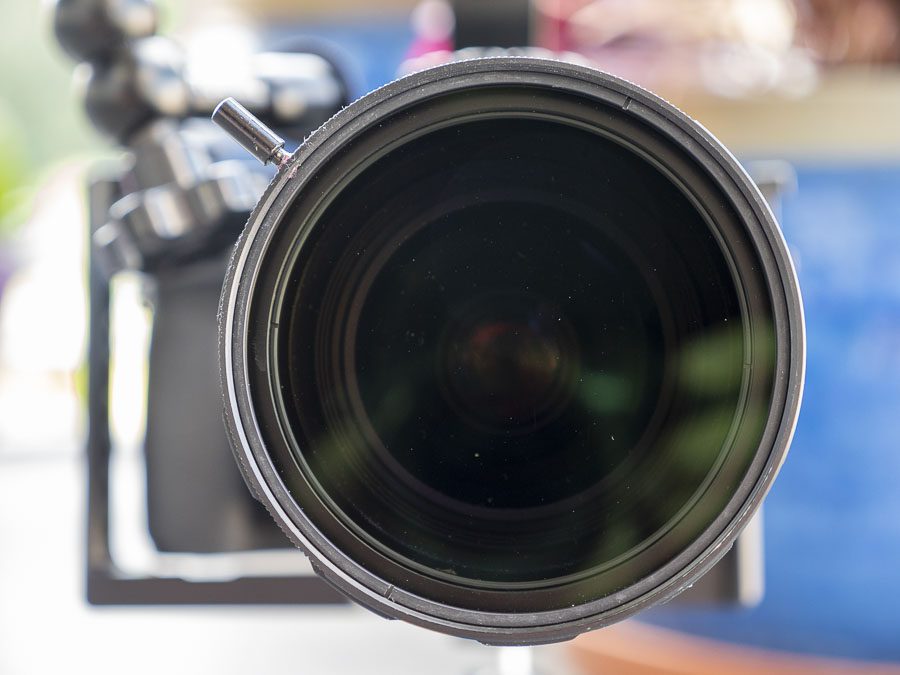
Additionally, I also have to recommended lens filters to get the most out of your lens. While there are many different types of filters, the first one I’d recommend is a variable ND filter.
I recommend you read our comprehensive guide Best Variable ND Filter For Video if you want an in-depth explanation of ND-filters. Remember, since cine lenses often have a big diameter, buying a big variable ND is recommend, e.g. 82mm.
Now, if you already have an ND filter, it is also possible to purchase a step-up ring to fit your filters to your new lens. However, if you do not possess an ND filter, it may be a good additional purchase for multiple reasons.
Firstly, having a filter on your lens could protect against scratches and ND filters are much cheaper to replace. Secondly, they will help you use your big purchase to its fullest potential.
Variable ND filters let you adjust the amount of light entering your camera (like sunglasses), so if you want to fully open up that aperture on your new great lens, you’ll need one of these bad boys to do so outside during the day.
Lens adapter
Okay, let’s say you already have cine lenses, but bought a new camera. Or the cine lens you want to buy doesn’t fit your camera mount. That’s where a lens adapter will be helpful.
Perhaps in a hypothetical word, you already had access to some Rokinon EF-mount lenses, but you shoot on a Sony a6500 (e-mount). Well, luckily, you could pick up something like the Fotodiox Lens Mount Adapter for Canon EOS to Sony Alpha E-Mount Mirrorless lenses.
Now, with cheap lens adapters, it is good to be careful about things like light leaks that can compromise your footage, however as there are no electronics on cine lenses, you won’t have to worry about more expensive adapters that have to connect electronic signals as well.
If you have a cine lens with a PL-mount, adapters may be more expensive. PL-mounts were developed for 16mm and 35mm cinema cameras and are therefore more secure and precise.
You lose this benefit when adapting to, for example, an EF-mount. However, if you’re able to support the lens and already have access to the glass, acquiring an adapter still may be in your best interest.
Follow Focus
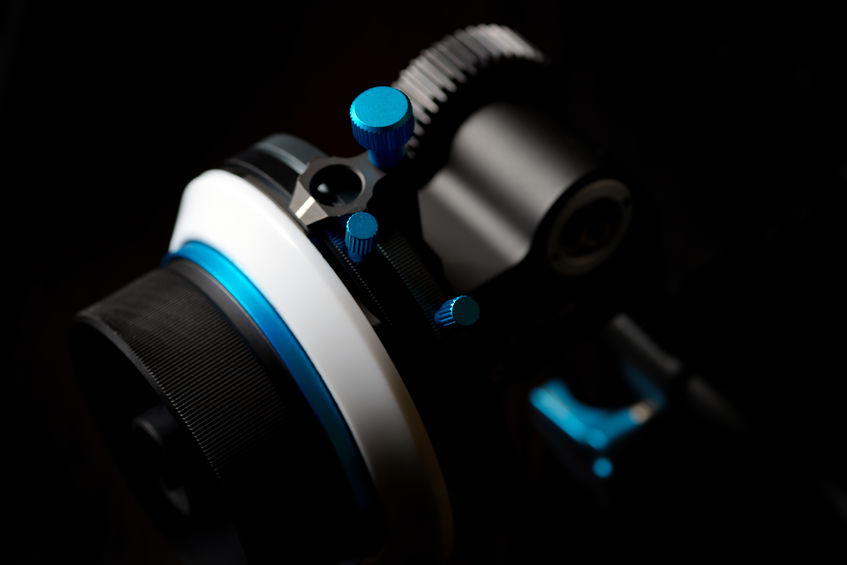
At this point, you can surely use your cine lens and use it well. You can adjust your aperture, use your ND filter to shoot outside during the day and adapt your lenses to your camera. However, if we want to get fancy, we can acquire a follow focus rig as well.
Essentially a follow focus is a markable gear that attaches to the geared focus ring on the cine lens that allows for smooth adjustments.
The ability to mark the follow focus in dry erase also lets you prepare rack focuses and pull them off precisely and perfectly. If you’re looking to pick up your first follow focus, Viltrox and Neewer both make affordable options that will work in most situations.
Camera Rods
In order to use a follow focus rig in tandem with your camera and lens, you also need camera rods (often 15mm) with a baseplate. Again, Neewer makes very affordable systems you can pick up for as low as $25 which should work great, to begin with. The parts of a follow focus rig then include a rail clamp, an arm, a gear, a focus knob, a white disc (for marking), and lens gear ring (if the lens doesn’t have built-in gearing).
The follow focus slides on to the rails, the gears connect with the lens, and the focus knob is twisted in order to have a smooth transition. This may seem like a lot, but these systems are extremely helpful in situations where you will be racking focus.
Converting Still Lenses To Have Some Of The Features Of Cinema Lenses
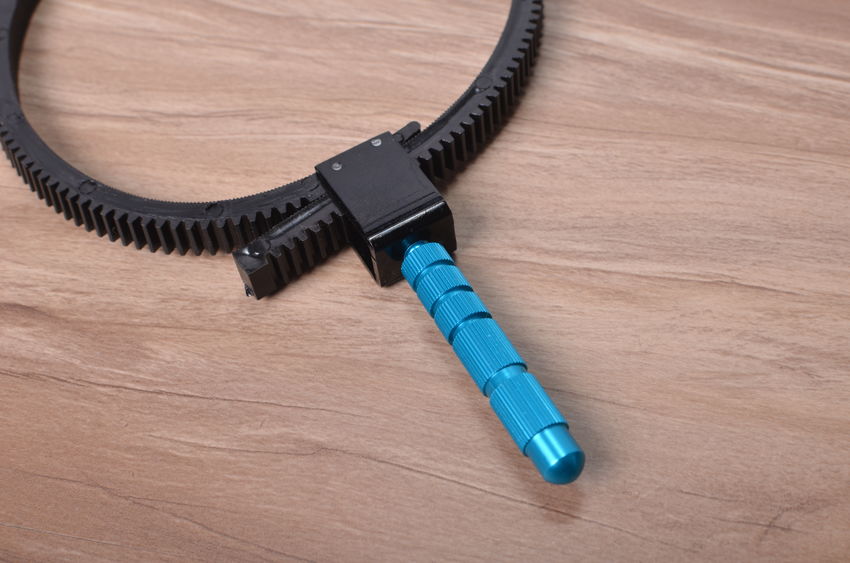
Follow focus systems can also be used with still lenses. Though cine lenses have built-in gearing, most follow focus rigs include a gear ring that can be slipped around still lenses to adapt them to the system, expanding the usability of your whole rig if your access to cine lenses is limited.
In fact, there are many modifications that can be made to vintage still lenses to make them function more similarly to a cine lens. In addition to having a lens gears, the appropriate mount adapter, and set up rings to match filters, de-clicking the aperture ring allows for minute control over aperture. This is quite an involved process though and requires taking your lens apart.
Matte Boxes
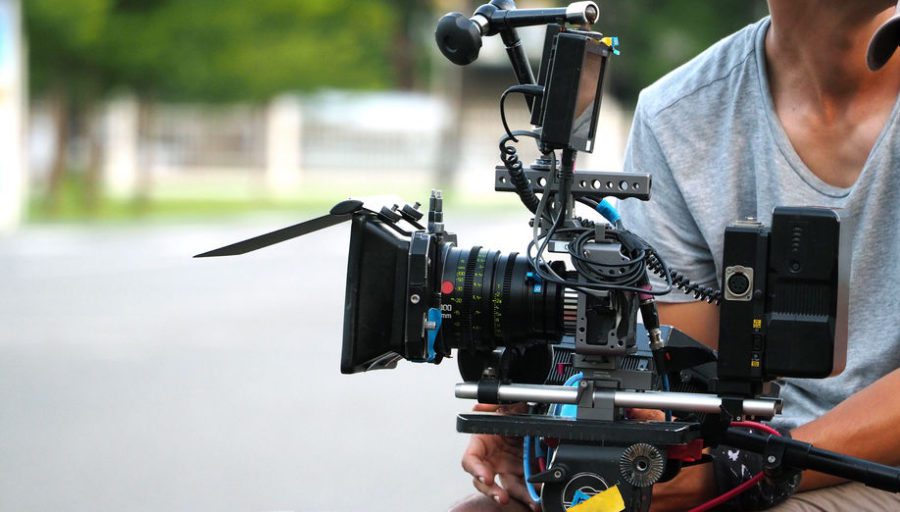
Matte boxes are another accessory that will help you build your cinema rig. Most basically, a matte box is a set of blinders that attaches to the end of a lens. The benefit of a matte box is that it blocks stray light which can cause an unwanted lens flare.
Especially if you’re shooting outside, a matte box will be helpful. Blocking harsh light offers even more consistency and they are capable of holding multiple filters with an easy drop-in system.
If you are to use a matte box, do some research and make sure your filters are the correct size. Additionally, some boxes attach to the lens whereas others require a rod support system similar to a follow focus.
A final note is that these boxes can be large and cumbersome, adding to the weight of your rig. Though they help further your consistency, a matte box, cine lens, follow focus, and camera rods can end up being quite heavy, so be sure to know the conditions you will be shooting in.
Now, is everything I just listed necessary to use a cine lens? Absolutely not. But they are helpful in building out a complete rig. For starters, however, I’d recommend the lens filters and the case to ensure you don’t break the lens. Most of us hopefully will have lenses that fit our camera’s mount, and for most projects, adjusting the focus manually should be enough.
Types Of Cine Lenses
You may be wondering what your options are and what types of cine lenses exist. As we already covered, there are zoom and prime cine lenses, though zoom lenses are expensive and rare. Instead, with most cine lenses being prime, it is common to see packages of lenses with varying focal lengths.
However, you may still be interested in purchasing or renting a zoom cine lens which is completely understandable. Zoom cine lenses in a sense can replace multiple prime lenses and you won’t have to change the lens as often, so it’s good to know they exist.
Zoom lenses also tend not to match the image quality of good prime lenses and are often not as fast. In specific cases, zoom lenses may be the right choice, but they are certainly seen less often.
More commonly you will see a kit of prime cine lenses at varying focal lengths. The first kit of cine lenses I used was a set of five Rokinon lenses, 14mm, 24mm, 35mm, 50mm, and 85mm. As you may know, focal lengths under 50mm are wide-angle, those over are telephoto.
What was nice about this array was having multiple wide-angle options. Considering how something as wide as a 14mm lens has some barrel distortion, which can be a cool effect but is certainly not something you’d want for every shot, it was beneficial to have the 24mm and 35mm lenses to swap to.
To get an idea of price, a Rokinon lens kit such as this cost around $2,000, or $400 per lens. This is certainly on the cheaper end of the spectrum with some lenses costing significantly more on their own. However, there are many different brands. In addition to Rokinon, some manufacturers include, Leica, Canon, Zeiss, Cooke.
In the ordering of expectant price points, Rokinon falls into the budget category, as do SLR Magic Lenses, both offering cine lenses that cost a couple of hundred dollars. For a mid-range price point, Tokina makes lenses ranging from about $1500 to $2500.
Now, for the high end we have Canon making cinema lenses that cost close to $4000 new, Zeiss manufacturing lenses around from $4500 up, and, just to get an idea of how expensive it can be, Fujinonn offering a 15.5-44mm zoom lens at a price of $99,000. I’ll admit, it’s a bit of a range, but to keep things simple I’ll assume most of us cannot afford that.
How To Choose Your Cine Lens
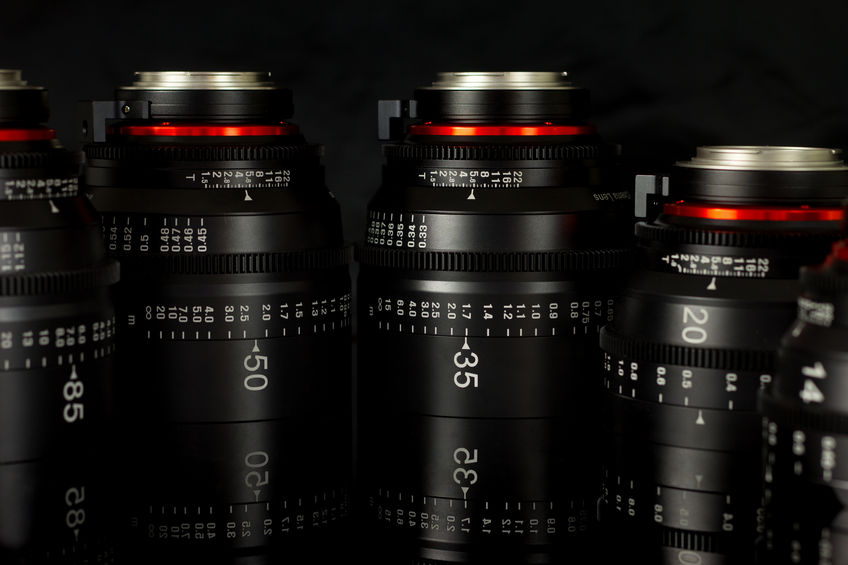
The main factor in selecting the brand of your cine lens, or lenses, will be price. As we learned above, the price between lenses varies drastically. Therefore, it’s essential to know how much you’re willing to spend on a lens and what you hope to get.
Between a $4000 Canon CN lens and a $500 Rokinon lens, there will be a difference in quality. A Rokinon lens still has much to offer, but when you’re paying eight times the price, a clearer and sharper image, and less lens breathing are expected.
The bigger decision instead will be what focal length lens, or lenses, to purchase. This often comes down to personal preference and it can be helpful to ask yourself what focal length you typically find yourself shooting.
Do you prefer a wide-angle look? Or something a bit closer to what the naked human eye sees as normal? If you like a standard look, then acquire a 50mm lens. It’s hard to go wrong with that focal length, to begin with. However, if you’re shooting in tight spaces a wide-angle could be much more useful.
If you’re building a kit and don’t have to limit yourself to one lens, then you’ll have a couple more options. I’d recommend getting a 50mm first, then a wide-angle lens or two, and a telephoto lens last.
Having some variation is always helpful, and in order to get the most consistent image, it is great to be able to use cine lenses of the same brand throughout the whole project.
Once you know what brand and focal lengths you’re going to get, make sure that the mount matches the camera you’re using. Then figure out the diameter of the lens, get a corresponding ND filter, and you should be good to go!
Conclusion
Tip: Now that you’re familiar with cine lenses have a look at my guide Best Affordable Cine Lenses (Budget, Mid-Range, and Professional).
Alright, now you should be up to speed on cine lenses! Whether you’re a prospective buyer, just doing research, or already have a one, I hope this article helped educate you a bit more on the world of cine lenses.
Furthermore, if you have any experiences with cine lenses or any of the topics mentioned, be sure to comment on how you’ve used cine lenses and what your personal recommendations are.
I’ll look forward to hearing what you have to say!

